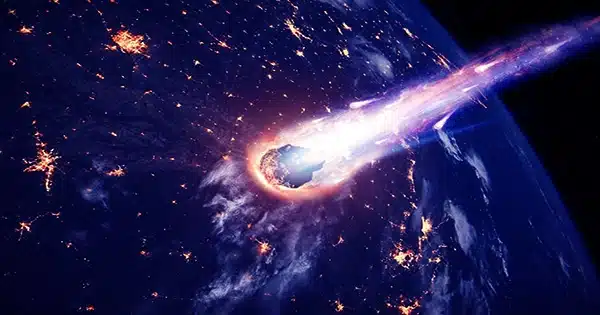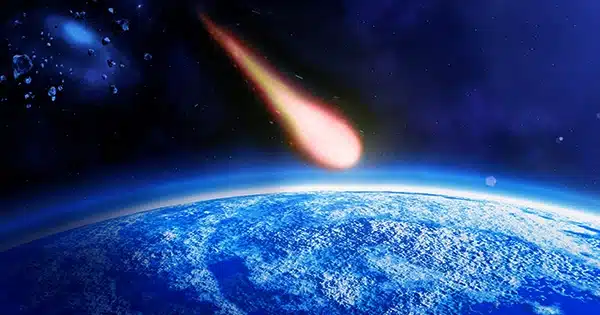According to experts from a variety of areas, none of the assertions attempting to provide evidence for an astronomical end to North America’s Hopewell Culture hold up. The authors of response research are certain that it was not an exploding comet that precipitated the downfall of the amazing trade networks focused on the Ohio Valley 1,500 years ago.
Since it became clear that an asteroid wiped out the (non-avian) dinosaurs, a group of experts and enthusiastic amateurs have proposed smaller versions of the same event to explain more recent occurrences. The concept is not necessarily implausible. Small asteroids hit the Earth all the time, and catastrophes like the Tunguska explosion may do significant local damage if they occurred in a populated area.
A huge enough space rock would leave an unmistakable crater, but Tunguska demonstrates the possibility of an airburst, with an explosion strong enough to cause significant damage but leave no visible basin. Several dramatic events, most recently the fall of the Hopewell culture, have been attributed to something comparable throughout the last few thousand years. However, there are many skeptics who are underwhelmed by the claims of “team comet,” and some of them have banded together to dismantle previously given assertions.

Native Americans traded from the Great Lakes to Florida for 600 years, a vast distance when all travel was by foot or boat. This time, often referred to as the Hopewell culture, covered a network of interconnected societies, prompting many anthropologists to refer to it as the Hopewell tradition instead. A decline happened around 1,500 years ago, with long-distance trade disappearing and many of the marks of the practice, such as the construction of large mounds, ceasing. The reasons remain unknown.
Kenneth Tankersley of the University of Cincinnati revealed his solution last year. Tankersley and colleagues presented evidence for an airburst over southern Ohio in the form of burned communities, meteorites, and a local increase in quantities of minerals found in asteroids and comets.
A dozen scientists, led by Dr. Kevin Nolan of Ball State University, now assert that every significant part of this is incorrect.
“There is no evidence for catastrophically burned habitations at any of the 11 Hopewell sites studied by Tankersley’s team,” stated Nolan in a statement. “The burned surfaces identified by University of Cincinnati researchers are either localized episodes of burning for ceremonial purposes, such as creating the honored dead, or they are not even burned surfaces at all.”
“Whatever meteorites are present at these sites were most likely collected by ancient Indigenous peoples – probably from various locations – and brought to these Hopewell sites to be crafted into ceremonial regalia,” Noland concluded. “The iron and silica-rich microspherules do not have the chemical composition typical of meteorites, so they are natural products of local soil chemistry.”
According to Nolan and co-authors, the scattered sites Tankersley alleges were all destroyed at the same time had widely varied ages, showing that whatever caused the Hopewell decline was far too gradual to be a visitor from space. Indeed, while trading networks and large-scale development declined, Nolan contends that population stability in the region was incongruous with a disaster.
Nolan is an archaeologist who specializes in the study of the Ohio Valley during the Hopewell period. Tankersley, like others in his area, contacted the Smithsonian’s meteorite expert Dr Timothy McCoy, who was equally dissatisfied by Tankersley’s proposal.
Quotes from the paper include, “Tankersley et al. misrepresent primary sources, conflate discrete archaeological contexts, improperly use chronological analyses, insufficiently describe methods, and inaccurately characterize the source of supposed extraterrestrial materials to support an incorrect conclusion.” This is not a case of “we respectfully disagree.”
Indeed, the study targets “cosmic catastrophism,” such as the concept that an explosion devastated Tall El-Hammam, giving rise to the narrative of Sodom and Gomorrah. “These scenarios oversimplify complex and dynamic human-environment interactions and are steeped in pseudoscientific beliefs rather than anthropological theories of social decline that can be tested using the archaeological record,” write the authors.
However, it is likely that the criticism of data from the Jennison-Guard website will cut the deepest. Nolan and colleagues claim Tankersley combined samples from locations 10 meters (33 feet) apart but separated in time at the site he dug himself. Tankersley is also accused of combining components discovered in comets and two different types of meteorites.













